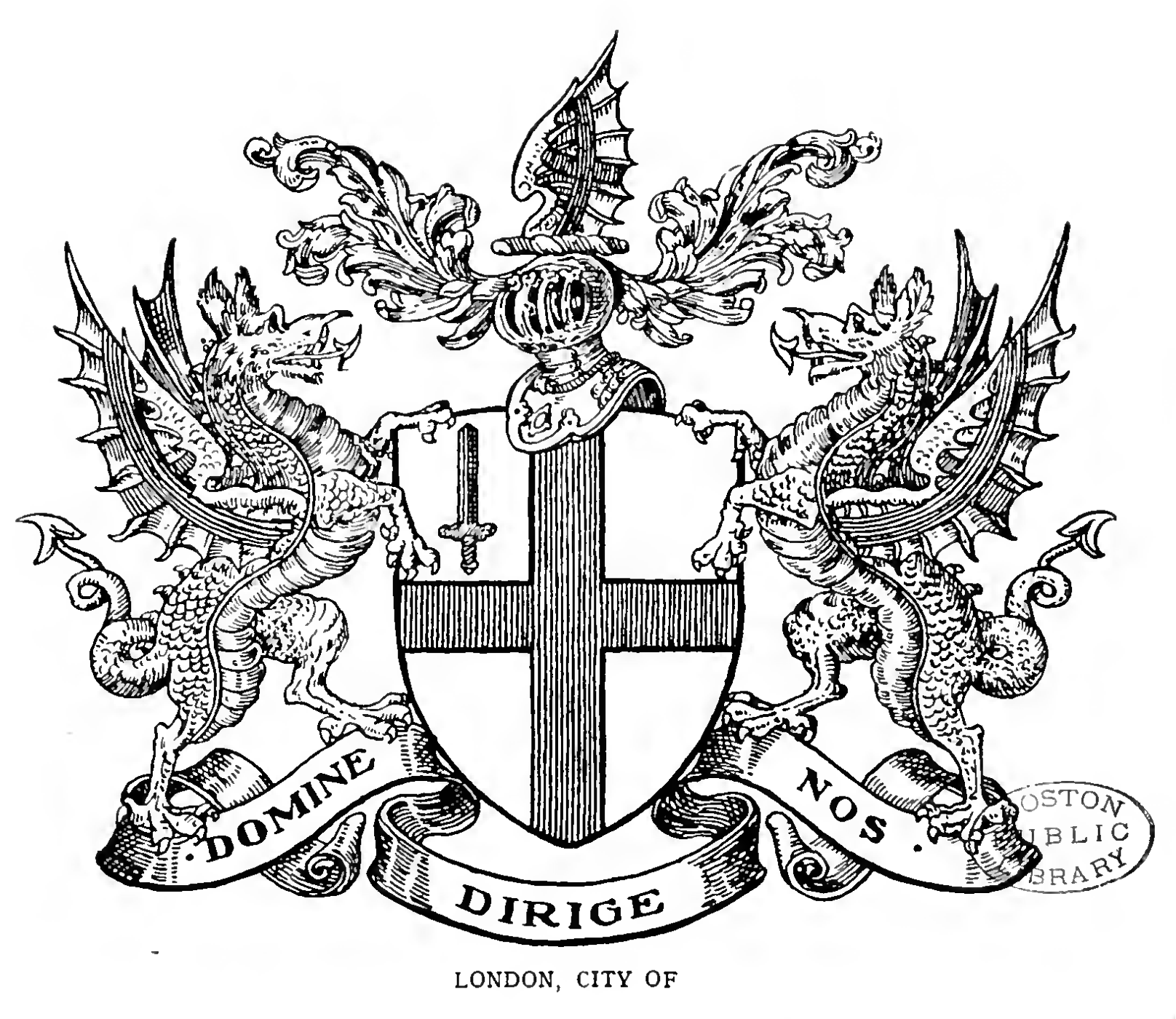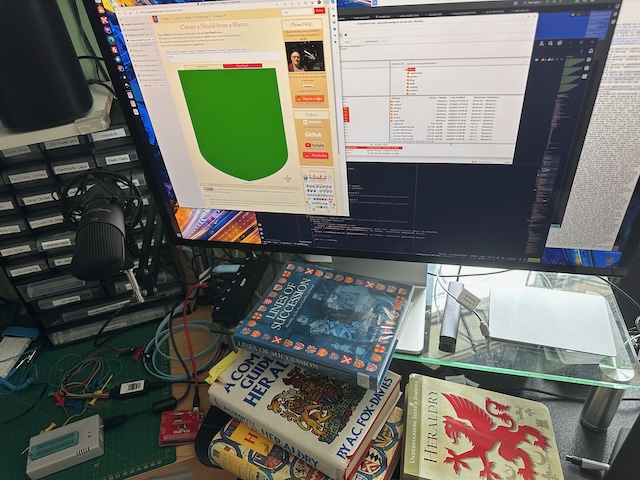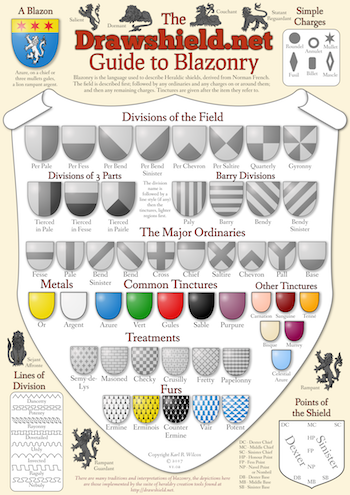LONDON (City of).
LONDON (City of). Argent, a cross gules, in the first quarter, a sword in pale, point upwards, of the last. Crest — A dragon's sinister wing argent, charged with a cross gules. Stipporters — On either side, a dragon with wings elevated and endorsed argent, and charged on the wing with a cross gules. Motto —
" Domine dirige nos."
Strange indeed as it may seem, the crest and supporters used by the City of London, the first city in the world, are not recorded in His Majesty's College of Arms, and are of no authority. As Vincent only gives the coat-ofarms, it proves pretty conclusively that the crest and supporters are modern. The arms date back to 1359, the crest to 1539, the supporters and motto to 1633, when they first appear in the 4th Edition of Stow's "Survey of London."
[Within a few days of publication a MS., dated 1609, has come into the possession of the Corporation, which shows these supporters presumably in use at that date.]
The legend, imaginative and chimerical as a statement from such a quarter usually proves to be, as to " Wat Tyler's dagger " appearing on the arms of the City of London, is, of course, a pure piece of fiction. The "dagger" in question is not a dagger at all, but a sword, as may be plainly seen by a reference to Vincent's original drawing in the College of Arms, which is there so clearly sketched that there is no "possible probable shadow of doubt, no possible doubt whatever." The sword is, of course, a badge of the patron saint of London, St Paul. The arms with the sword appear upon the Seal which was taken into use 17th April 1381, before the death of Wat Tyler, 15th June following.
Asto the supporters, usage seems pretty constant, the only variation beingthat the cross is sometimes " couped " instead of " throughout." And the same may be said of the cross upon the crest, but the "couped " variety is not common, and I have never seen it upon anything official. A misprint in Burke's " General Armory " has frequently caused some little confusion as to the crest amongst those unacquainted with the form in use. The Mayor's seal shows two lions sejant guardant as supporters.
Another variation which I have seen frequently perpetrated is the making of the crest into " a pair of wings addorsed." The Corporation gas pillars are the worst offenders on this point. The helmet in use over the arms of the City of London is that of a peer. Such a practice with town or city arms is officially admitted nowhere at the present day, though I have seen it done elsewhere. But the remarkable point is this, that with the arms of London this usage is practically universal. No helmet appears above Vincent's sketch in the ' College of Arms; but is there any valid reason for the invariable practice, which appears to hold good ? The " Right Honourable " was until of recent years a title strictly appertaining amongst Mayors to the Lord Mayor of the City of London. Moreover, he is always addressed, of course, as " My Lord," both of which are amongst the privileges of peers. Is it for this reason that a peer's helmet has been appropriated to the arms of the City of London ? Very often the arms are surmounted by a representation of the fur cap of office, after the
manner of a coronet. This, as a decorative addition to the arms, first appears in the "Armory of London " in 1677, but it is only placed above the arms in . i6go. There is no authority for its use. Norwich makes use of a similar ornament upon its Corporation notepaper, though probably even with less reason than the City of London. Since the publication of the first Edition a Committee of the Corporation was appointed to consider the question of the City Arms. It presented a most valuable report which has since been printed, and which admits what I had pointed out, that there is no authority for the crest and supporters: but the'dear old Corporation couldn't screw its courage up sufficiently to take steps to legitimise its bogus insignia. As the Corporation desires to perpetuate a certain form it is here reproduced. They call it the " Correct Coat of Arms," I call it the " bogus " one.
Original Source bookofpublicarms00foxd_djvu.txt near line 15560.

Please Help!
DrawShield is a Free service supported by its users.

If you can, please help cover the cost of the server, or just buy the team a coffee to say thanks!
 Buy me a coffee
Buy me a coffee


